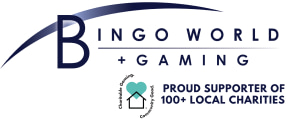| Address | 2160 Dunwin Drive, Unit 4 Mississauga, Ontario L5L 5M8 |
| Phone | 905-450-1900 1-855-734-2111 (toll free) |
| [email protected] | |
| Website | www.epilepsyhaltonpeel.org |
| Staff | Cynthia Milburn, Executive Director Sonia Deacon, Program Manager |
| Address | 2160 Dunwin Drive, Unit 4 Mississauga, Ontario L5L 5M8 |
| Phone | 905-450-1900 1-855-734-2111 (toll free) |
| [email protected] | |
| Website | www.epilepsyhaltonpeel.org |
| Staff | Cynthia Milburn, Executive Director Sonia Deacon, Program Manager |
Africa Americas Asia Europe Do you know an epilepsy organization that we have not listed? Let us know at [email protected]. Check out other supporting agencies in Ontario and across Canada.InternationalExpand International Section
South AfricaExpand South Africa Section
United StatesExpand United States Section
JapanExpand Japan Section
AustraliaExpand Australia Section
FranceExpand France Section
GermanyExpand Germany Section
IrelandExpand Ireland Section
ItalyExpand Italy Section
SwedenExpand Sweden Section
United KingdomExpand United Kingdom Section
Do you know an epilepsy organization that we have not listed? Let us know at [email protected]. Check out other supporting agencies in Ontario and around the world.CanadaExpand Canada Section
AlbertaExpand Alberta Section
British ColumbiaExpand British Columbia Section
ManitobaExpand Manitoba Section
Newfoundland and LabradorExpand Newfoundland and Labrador Section
Nova ScotiaExpand Nova Scotia Section
Prince Edward IslandExpand Prince Edward Island Section
902-854-2063
Dorothy Farish
RR 1
Richmond, PE
C0B 1Y0QuebecExpand Quebec Section
SaskatchewanExpand Saskatchewan Section
Regina, SK
S4P 0Z8
306-565-0664 (fax)
Magnetoencephalography (MEG), also known as Magnetic Source Imaging (MSI), is a non-invasive scanning technique that provides information about the structure and function of the brain. It is a safe and painless procedure.
How does it work?
MEG detects small biomagnetic signals that the brain produces and records magnetic fields over the surface of the head. These signals show which areas of the brain are active, allowing us to see how different areas of the brain interact with one another.
MEG can help identify the areas of the brain emitting abnormal electric currents that cause seizures. Patients often perform cognitive tasks during the MEG to help localize the learning and memory areas of the brain. The MEG produces a high resolution image of the brain that relates the functioning of the brain with behaviour.
One advantage MEG has over PET and fMRI, which depend on changes in blood flow in the brain, is speed. Unlike PET and fMRI, MEG is fast enough to provide information about the changes in neuronal firing to the millisecond. MEG records magnetic signals produced by the responding neurons, which enables us to see rapid brain potentials.
Before an MEG/MSI
During an MEG/MSI
Payment
This test is covered by the Ontario Health Insurance Plan (OHIP).
 Sponsor Image 1
Sponsor Image 1
 Sponsor Image 2
Sponsor Image 2
 Sponsor Image 3
Sponsor Image 3
 Sponsor Image 1
Sponsor Image 1
 Sponsor Image 2
Sponsor Image 2
 Sponsor Image 3
Sponsor Image 3